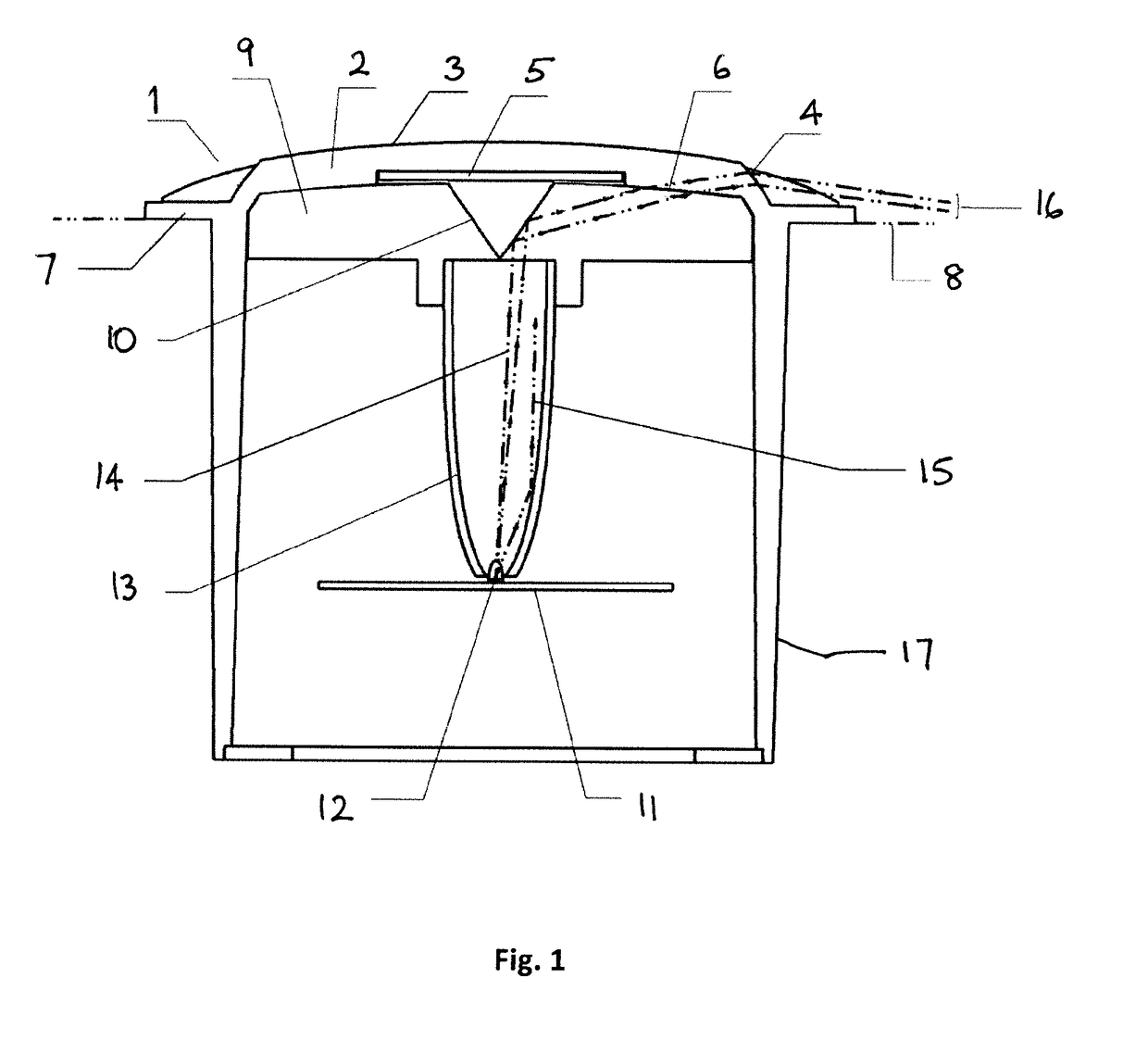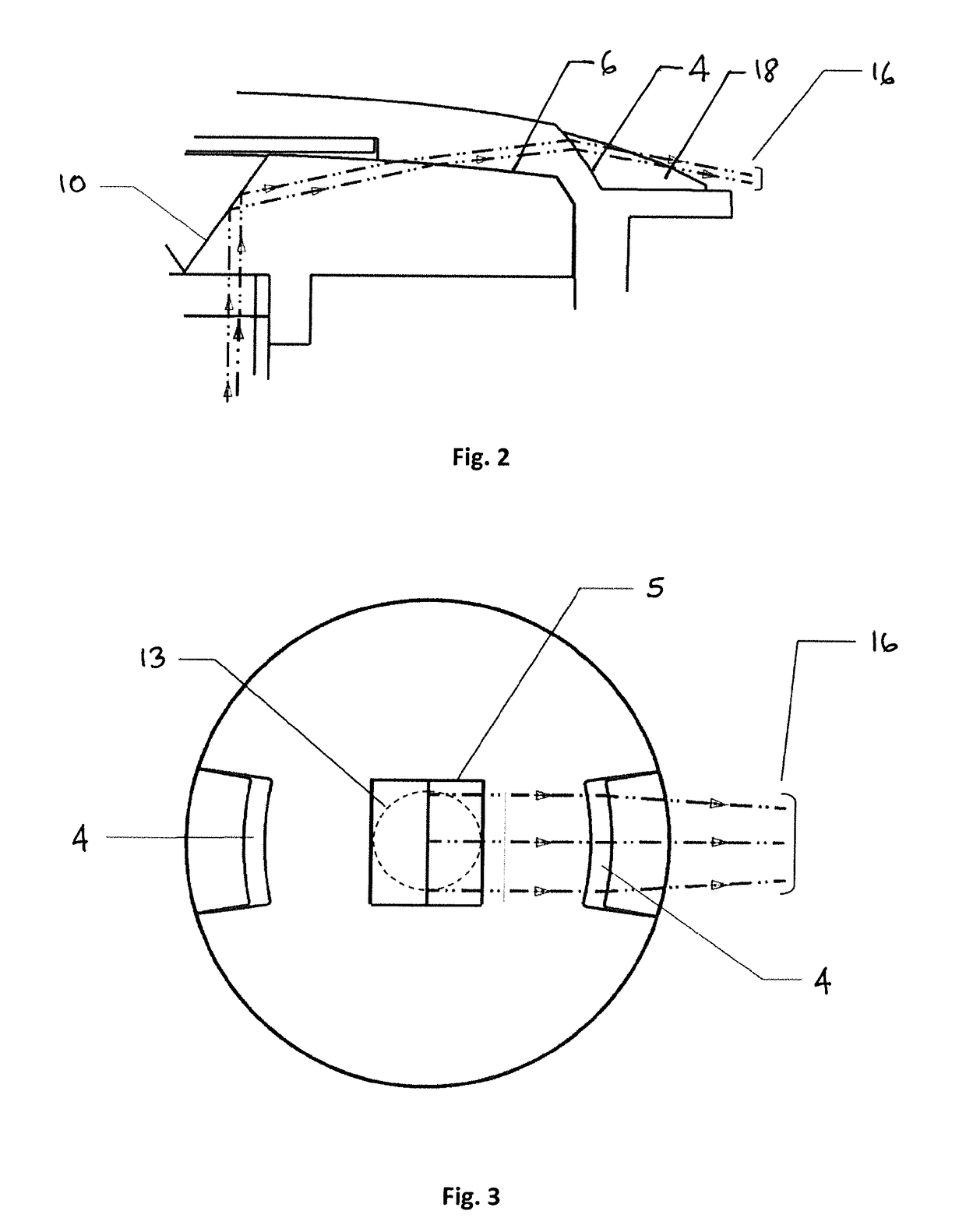Ground Level Illumination System
a ground level illumination and robust technology, applied in the direction of instruments, ways, with built-in power, etc., can solve the problems of de facto shallow angle of incidence of any illuminating rays, and difficulty in producing a low f-number optic, so as to reduce the volume of paint required and reduce the electronic power
- Summary
- Abstract
- Description
- Claims
- Application Information
AI Technical Summary
Benefits of technology
Problems solved by technology
Method used
Image
Examples
Embodiment Construction
[0091]The invention will now be described in detail with the aid of the accompanying drawings.
[0092]FIG. 1 shows a cross-sectional side view of a ground level illumination system 1, such as could be used to illuminate a road or pathway. For clarity only the key aspects of the illumination in one direction are described in detail. However, the arrangement is symmetrical and provides bi-directional illumination to the left and right sides as viewed in the drawing. A top block 2 comprising a low refractive index material has a curved upper surface 3. The refractive index of the top optical block 2 is 1.5 or less. The top block 2 incorporates a toroidal refractive surface 4 and a pocket to accommodate a solar cell 5. The upper surface 3 provides optical gain and helps the collection of sunlight energy for the solar cell 5. The top block 2 has a lower curved surface 6 and has a flange 7 which sits at the ground level as indicated by construction line 8.
[0093]The solar cell 5 is used to s...
PUM
 Login to View More
Login to View More Abstract
Description
Claims
Application Information
 Login to View More
Login to View More - R&D
- Intellectual Property
- Life Sciences
- Materials
- Tech Scout
- Unparalleled Data Quality
- Higher Quality Content
- 60% Fewer Hallucinations
Browse by: Latest US Patents, China's latest patents, Technical Efficacy Thesaurus, Application Domain, Technology Topic, Popular Technical Reports.
© 2025 PatSnap. All rights reserved.Legal|Privacy policy|Modern Slavery Act Transparency Statement|Sitemap|About US| Contact US: help@patsnap.com



